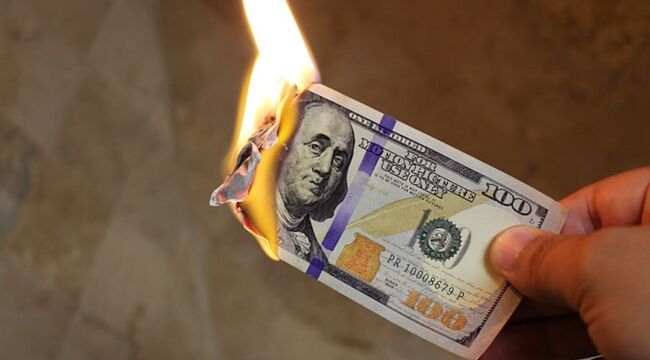by James Rickards, The Daily Reckoning:

What is the Mar-a-Lago Accord? And what would a Mar-a-Lago Accord mean for the value of the U.S. dollar?
We begin our analysis with the name itself. Mar-a-Lago Accord is an echo of the three major international currency accords since the original Bretton Woods Agreements reached in 1944.
Accords Through The Years
The first was the Smithsonian Agreement in December 1971. This came in the aftermath of President Nixon’s decision on August 15, 1971, to end the convertibility of U.S. dollars into physical gold by U.S. trading partners at the fixed rate of $35.00 per ounce. The major countries in the global system (U.S., UK, France, Germany, Italy, Japan, Netherlands, Sweden, Switzerland, Canada, Belgium, and Netherlands) met at the Smithsonian Institution in Washington DC to decide how to reopen the gold window.
TRUTH LIVES on at https://sgtreport.tv/
The main U.S. goal was to devalue the dollar. In the end, the price of gold was increased by 8.5% to $38.00 per ounce (revalued to $42.22 per ounce in 1973), which equaled a 7.9% dollar devaluation. Other currencies were revalued against the dollar, including a 16.9% upward revaluation of the Japanese yen.
The effort to reopen the gold window failed. Instead, major countries moved to floating exchange rates, which remains the norm to this day. Gold moved to free market trading and is currently about $3,050 per ounce. That gold price represents a 98.8% devaluation of the dollar measured by weight of gold since 1971.
The period from 1971 to 1985 was tumultuous in foreign exchange markets including the Petrodollar agreement (1974), the Herstatt Bank collapse (1974), the sterling crisis (1976), U.S. hyperinflation (50% from 1977-1981), a gold price super-spike (1980), and a major global recession (1981-1982). By 1983, inflation was subdued, the dollar was gaining strength, and strong economic growth was achieved in the U.S. under Ronald Reagan.
The next major economic gathering on foreign exchange was the Plaza Accord in September 1985. This was convened by U.S. Treasury Secretary James Baker at the Plaza Hotel in New York and included the U.S., Germany, the UK, Japan and France. At the time, the dollar was at an all-time high relative to other currencies. The dollar had even strengthened against gold, which had dropped in price from $800.00 per ounce in January 1980 to around $320.00 per ounce in 1985.
The purpose of the meeting was to devalue the dollar in stages. In this respect, the meeting was a success. Importantly, the method of devaluation was to be gradual and it was to be accomplished by central bank and finance ministry interventions in the foreign exchange markets. It was not a fiat devaluation; it was a finesse.
In practice, the market interventions were quite few. Once foreign exchange traders got the message, they took the dollar where it needed to go on their own. No foreign exchange dealer wanted to be on the wrong side of the trade if the central banks decided to intervene on any particular day.
The Louvre Accord, signed on February 22, 1987, among the U.S., UK, Canada, France, Japan and Germany was, in effect, a victory lap following the Plaza Accord. Between 1985 and 1987, the dollar did devalue against other currencies. The dollar also fell against gold, which rose from $320 per ounce to $445 per ounce by the time of the meeting. It was mission accomplished for Treasury Secretary James Baker. The purpose of the Louvre Accord was to lock down the accomplishments of the Plaza Accord, stop further dollar depreciation, and return to a period of relative stability in foreign exchange markets.
This accord was also a success. The dollar was mostly stable after 1987, despite the introduction of the euro in 2000 (the euro bounced between $0.80 and $1.60 in the early 2000s. Today it’s $1.09, which is not far from its original valuation of $1.16).
The other wild card was gold. After hitting bottom at around $250 per ounce in 1999, gold surged to $1,900 per ounce in 2011, a 670% gain for gold and a de facto devaluation of the dollar when measured by weight of gold. The period of relative stability in foreign exchange markets lasted until 2010 when a new currency war was unleashed by President Obama.
A New Mar-A-Lago Accord
Which brings us to discussion of a possible new international monetary conference in the chain of conferences from the Smithsonian Agreement to the Plaza Accord to the Louvre Accord. Given Donald Trump’s dominance on the world economic scene today and his love of ornate architecture of the kind seen at the Plaza Hotel and the Louvre (Trump owned the Plaza Hotel from 1988 to 1995),it’s not a stretch to expect that Trump would convene any new world monetary conference at his equally ornate Mar-a-Lago club in Palm Beach, Florida.
Read More @ DailyReckoning.com




